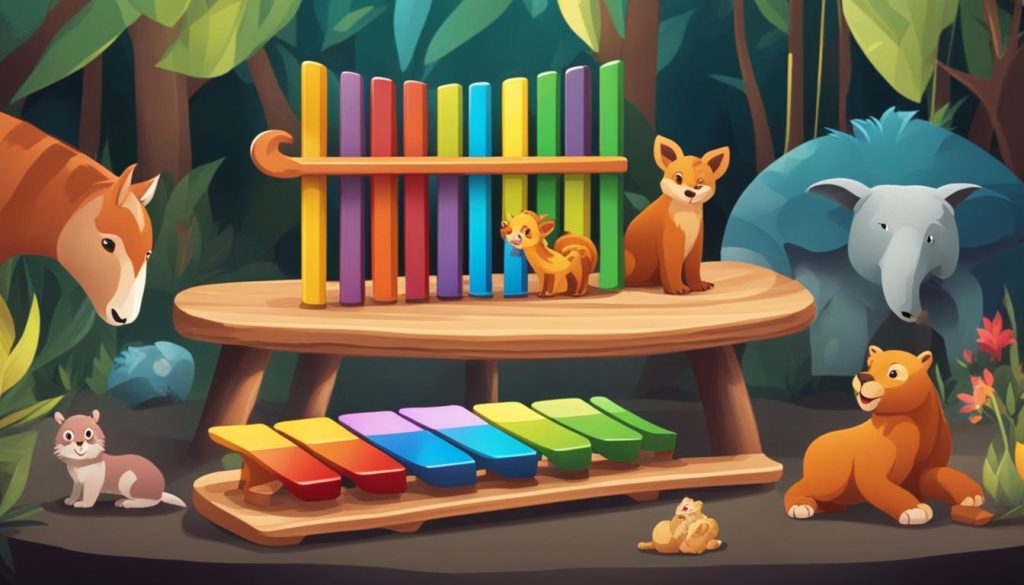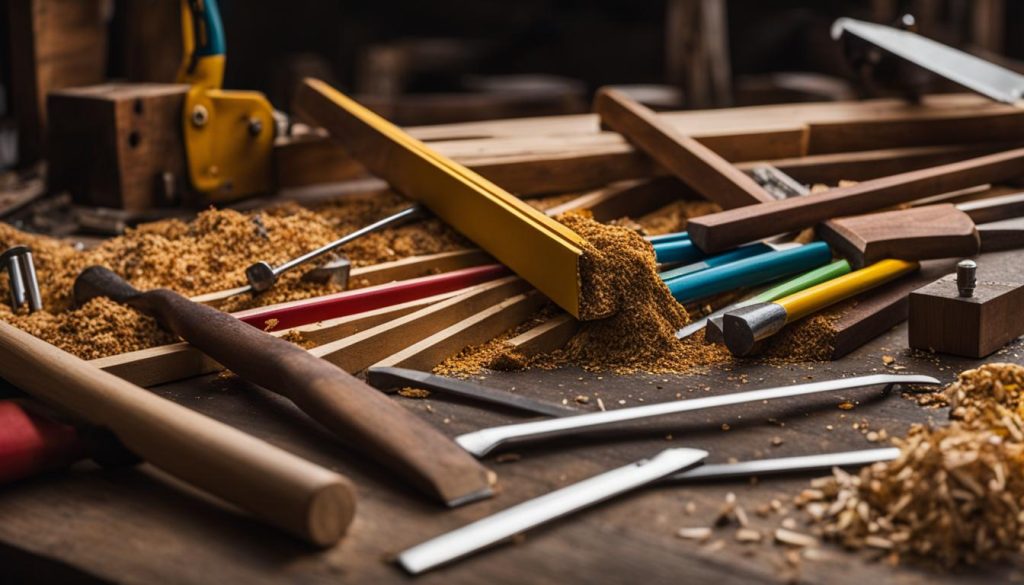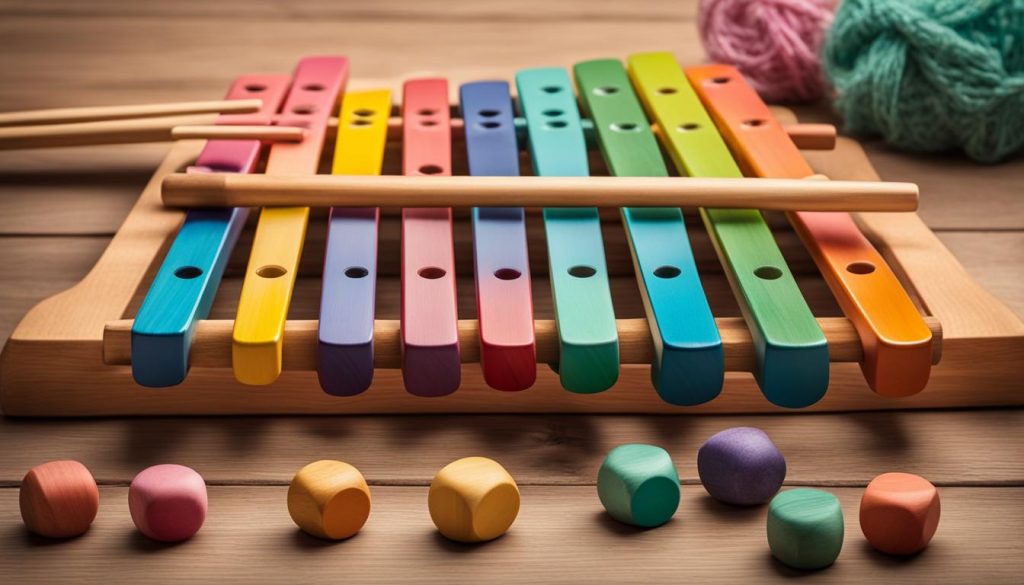As a professional copywriting journalist, I’m excited to share some fascinating and educational facts about xylophones that will surely captivate young learners. Xylophones are a type of musical instrument that belongs to the percussion family.
The Origin and Names of the Xylophone
The xylophone, a fascinating musical instrument, has a rich history and is known by various names in different cultures. While its exact origin remains unknown, it has been present in diverse cultures such as Africa, Southeast Asia, and Europe for centuries.
In Europe, the xylophone has been referred to as the “wooden clatter” and “straw fiddle,” highlighting its unique wooden construction and the sound it produces. In African cultures, it is called the “bafalon” in some regions, while other names include “mbilia” in Mozambique, “silimba” in western Zambia, and “gyli” in Ghana, Mali, Burkina Faso, and West Africa.
These different names reflect the instrument’s widespread influence and its integration into various musical traditions around the world. The xylophone’s adaptability and versatility have allowed it to evolve and resonate with diverse cultures, adding to its allure and charm.
Names of the Xylophone in Different Cultures
| Region | Name |
|---|---|
| Europe | Wooden Clatter |
| Europe | Straw Fiddle |
| Africa | Bafalon |
| Mozambique | Mbilia |
| Western Zambia | Silimba |
| Ghana, Mali, Burkina Faso, West Africa | Gyli |
As we explore the world of xylophones further, we’ll uncover more interesting facts about this enchanting instrument and its cultural significance.
The Xylophone’s Evolution and Use Beyond Music
The xylophone, originally made of wood, has evolved over time to include other materials such as metal. This transformation has expanded its usage beyond music. In Senegal, for example, the xylophone was traditionally used to scare away animals from gardens and crops. This demonstrates its practical application in daily life beyond its melodic qualities.
Interestingly, the xylophone has also found a place in the world of film. It has been utilized in movies to create sound effects, such as simulating the noise of bones clinking together. This underscores the versatility of the xylophone and its ability to contribute to various forms of artistic expression.
Furthermore, the marimba, a variation of the xylophone, has gained popularity in Mexico and Central America. With a softer sound and more bars, the marimba has become an integral part of these regions’ cultural heritage. Its unique characteristics make it a favorite in traditional music and celebrations.
From its humble beginnings as a wooden instrument to its presence in multiple aspects of life, the xylophone’s evolution and diverse uses demonstrate its enduring appeal and significance. Whether it’s scaring away animals, creating sound effects in movies, or enriching cultural traditions, the xylophone continues to captivate both young learners and avid musicians.
The Evolution of Xylophone Materials
| Material | Description |
|---|---|
| Wood | The traditional material for xylophone construction, known for its warm and resonant sound. |
| Metal | Modern xylophones can be constructed with metal bars, which produce a distinct and vibrant sound. |
The Xylophone in Film
The xylophone’s versatility extends to the world of film, where it has been used to create unique sound effects and enhance cinematic experiences. Its ability to mimic the sound of bones clinking together or provide an eerie atmosphere showcases the instrument’s diverse range and artistic value.
Historical and Modern Significance of the Xylophone
The xylophone has a rich history that stretches back thousands of years. Carvings of musicians playing the xylophone have been discovered in Southeast Asia, dating as far back as 2000 BC. In the 14th century, the xylophone gained popularity and underwent various developments, including the use of materials like natural rubber and bamboo.
However, it was in 1886 that the modern xylophone, also known as the orchestral xylophone, was introduced. This marked a significant turning point for the instrument, as it became a common fixture in orchestras and theater performances. The xylophone’s ability to produce distinct and vibrant tones made it an integral part of musical compositions across different genres.
Today, the xylophone continues to hold a special place in the world of music. Its unique sound and versatility make it a popular choice for players and composers alike. The xylophone’s ability to play melodic and percussive roles has solidified its position as an essential instrument in the percussion family.
| Historical and Modern Significance of the Xylophone | |
|---|---|
| Year | Significance |
| 2000 BC | Carvings of musicians playing the xylophone found in Southeast Asia. |
| 14th century | Popularity of the xylophone increases, leading to developments in materials and construction. |
| 1886 | Introduction of the modern orchestral xylophone, cementing its place in orchestras and theater performances. |
The xylophone’s historical significance lies in its cultural and musical contributions across different regions and time periods. From its origins in Southeast Asia to its adoption and adaptation in various cultures, the xylophone has played a vital role in expressing human creativity and emotions through music. Its evolution and continued relevance in contemporary music highlight its enduring appeal and importance.
Notable Uses of the Xylophone
The xylophone’s distinct sound has made it a versatile instrument, finding its way into various musical genres and applications. Here are some notable uses of the xylophone:
- Orchestras: The xylophone is a staple instrument in orchestras, adding bright and percussive tones to compositions.
- Theater and Film: Xylophones are often used in theater and film productions to create specific moods and sound effects.
- Traditional Music: The xylophone is integral to traditional music in cultures where the instrument has deep roots.
- Children’s Music: Xylophones are popular instruments for introducing children to music due to their simplicity and colorful design.
“The xylophone’s unique sound and versatility make it a favorite instrument for composers looking to add a touch of vibrancy to their compositions.”
With its rich history, diverse applications, and unique sound, the xylophone continues to captivate audiences and inspire musicians of all ages.
Construction and Sound of the Xylophone
The construction of a xylophone is an intricate process that involves careful selection of materials and precise tuning to create a harmonious sound. Xylophone bars are typically made from rosewood or a fiberglass material called Kelon. These materials are chosen for their resonance and durability.
The length of the xylophone bars determines the pitch of the notes produced. Longer bars play low notes, while shorter bars play high notes. The bars are arranged in a similar fashion to a piano keyboard, with the wider bars representing the lower pitches and the narrower bars representing the higher pitches.
Each xylophone bar has a resonator underneath, which amplifies the sound when the bar is struck with a mallet. The resonators are usually made of wood or metal and are carefully designed to enhance the clarity and sustain of the sound. Different materials and types of mallets can produce different sounds on the xylophone, allowing for a wide range of musical expression.
Features of the Xylophone Construction
Here are the key features of a xylophone’s construction:
- Xylophone bars are typically made from rosewood or Kelon.
- The length of the bars determines the pitch of the notes.
- Resonators underneath the bars amplify the sound.
- Different materials and mallets produce different sounds.
A xylophone is not only a visually appealing instrument but also a delightful tool for creating beautiful melodies. Its construction and design contribute to the unique sound it produces, making it a fascinating instrument for both young learners and music enthusiasts.
Xylophone in the Percussion Family
The xylophone is a fascinating instrument that holds a special place in the percussion family. As a member of this family, the xylophone shares its musical category with other instruments such as the timpani, snare drum, and glockenspiel. However, what sets the xylophone apart is its unique ability to produce a pitch when struck.
Unlike other percussion instruments that mainly produce rhythmic sounds, the xylophone’s wooden bars are tuned to specific pitches, allowing it to create melodic tones. This characteristic makes the xylophone an important instrument in various musical genres and ensembles.
For young learners, the xylophone offers an excellent opportunity to explore the world of music and rhythm. Playing the xylophone helps children develop a sense of pitch, rhythm, and coordination. It also enhances their fine motor skills as they learn to strike the bars with precision and control.
Benefits of Learning the Xylophone for Young Learners
- Improves hand-eye coordination
- Enhances fine motor skills
- Develops a sense of rhythm and timing
- Introduces basic music theory concepts such as pitch and melody
- Promotes creativity and self-expression through music
“Playing the xylophone can be a fun and educational experience for young learners. It introduces them to the world of music and offers various benefits for their cognitive and physical development.” – Music Educator
The Xylophone: A Gateway to Musical Exploration
By learning to play the xylophone, young learners can embark on a musical journey that fosters a lifelong love for music. Whether they choose to pursue a career in music or simply enjoy playing for pleasure, the xylophone provides a solid foundation for their musical growth.
So, let the vibrant sounds of the xylophone captivate your child’s imagination and open up a world of musical exploration. With its mesmerizing melodies and educational benefits, the xylophone is truly an instrument that young learners can enjoy and cherish.
Fun Fact and Conclusion
One interesting fact about the xylophone is that it is often used to create sound effects in movies. For example, the twinkling sound of Fred Flintstone’s toes at the bowling alley in the cartoon is actually made by a xylophone. This demonstrates the versatility and unique qualities of this fascinating instrument.
The xylophone has a rich history and continues to be popular in various cultures and musical settings. It offers a range of educational and developmental benefits for kids, making it an ideal instrument for young learners. Playing the xylophone can enhance their musical skills, hand-eye coordination, and cognitive abilities.
With its wooden bars and resonators, the xylophone produces distinctive and melodic sounds. Kids can explore different pitches and tones by striking the bars with mallets. It is a fun and interactive way for children to engage with music and express their creativity.
In conclusion, the xylophone is not only a captivating instrument but also a valuable tool for children’s growth and development. Whether they dream of becoming musicians or simply enjoy making music for fun, the xylophone provides an educational and entertaining experience for kids of all ages.
FAQ
What is a xylophone?
A xylophone is a musical instrument that belongs to the percussion family. It consists of wooden bars that are hit with a mallet to produce different pitches.
How are the bars arranged on a xylophone?
The bars on a xylophone are arranged like the keys of a piano.
What are the resonators underneath the xylophone bars for?
The resonators underneath the xylophone bars make the sound last longer.
Where did the xylophone originate from?
The modern orchestral xylophone developed from folk instruments found in Africa and Asia. Its exact origin is unknown.
How is the xylophone played?
The xylophone is often played so that the music sounds an octave higher than written. It is typically played with two mallets.
What is a marimba?
The marimba is a type of xylophone with a softer sound and more bars.
What are some other names for the xylophone?
The xylophone goes by different names in different cultures, such as “wooden clatter” and “straw fiddle” in Europe, and “bafalon” in Africa. It is also known as the “mbilia” in Mozambique, “silimba” in western Zambia, and “gyli” in Ghana, Mali, Burkina Faso, and West Africa.
What materials are used to make xylophones?
Xylophones were originally made of wood, but now they can also be made of metal.
How is the xylophone used in movies?
The xylophone is sometimes used in movies to create sound effects, such as simulating the noise of bones clinking together.
What is the history of the xylophone?
The xylophone has a long history, with carvings of musicians playing it dating back to 2000 BC in Southeast Asia. In the 14th century, the xylophone gained popularity, and different variations of the instrument were developed using materials like natural rubber and bamboo. The modern xylophone, also known as the orchestral xylophone, was introduced in 1886 and became a common instrument in orchestras and theatre performances.
How is the sound produced on a xylophone?
Xylophone bars are typically made from rosewood or a fiberglass material called Kelon. Longer bars play low notes, while shorter bars play high notes. Each bar has a resonator underneath to amplify the sound when struck with a mallet.
What family does the xylophone belong to?
The xylophone is a member of the percussion family, which also includes instruments like the timpani, snare drum, and glockenspiel.
What are some educational benefits of playing the xylophone?
Playing the xylophone can enhance children’s musical skills and hand-eye coordination.
Can you share a fun fact about the xylophone?
The sound of Fred Flintstone’s twinkling toes at the bowling alley in the cartoon is made by a xylophone.





